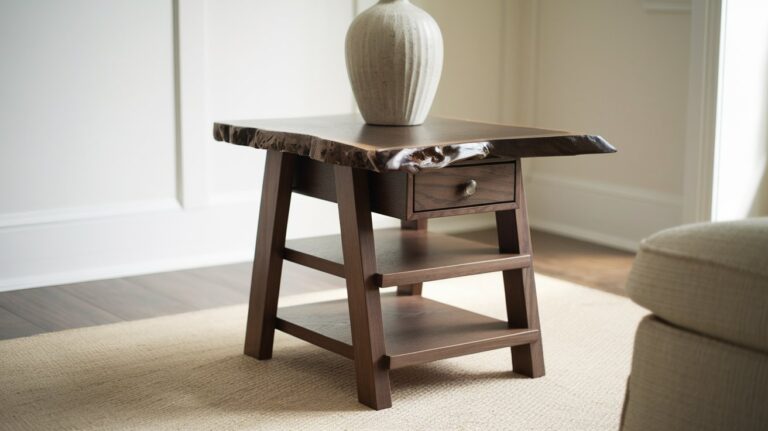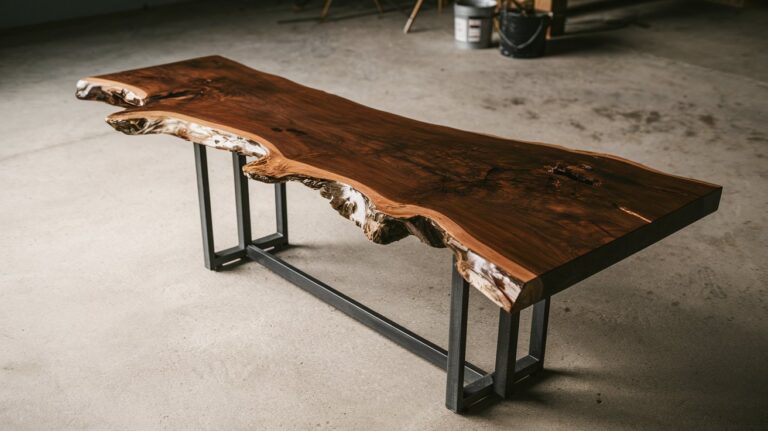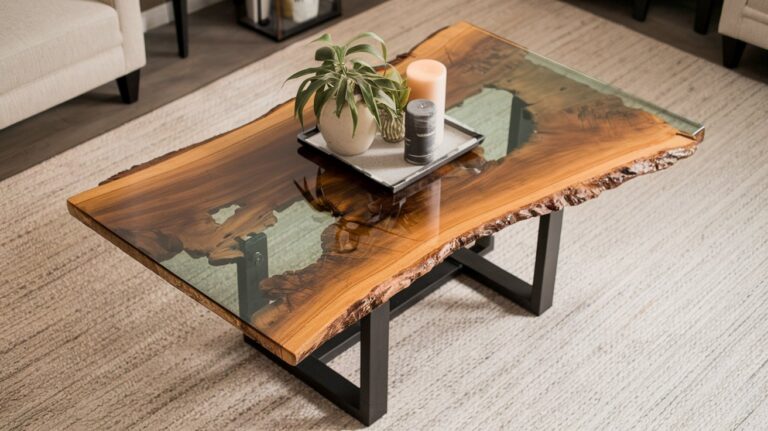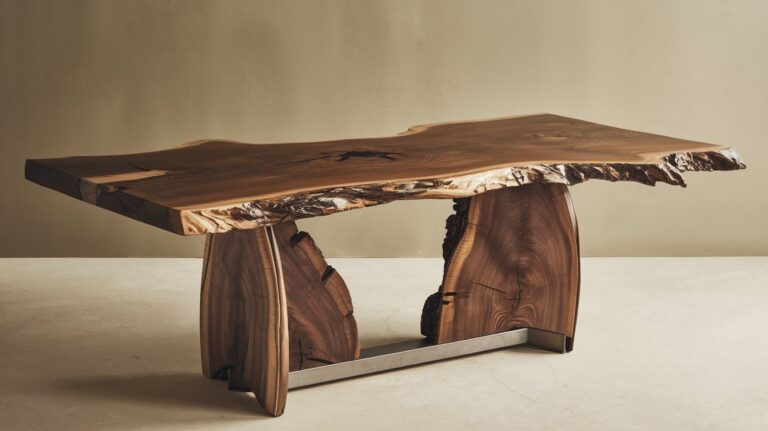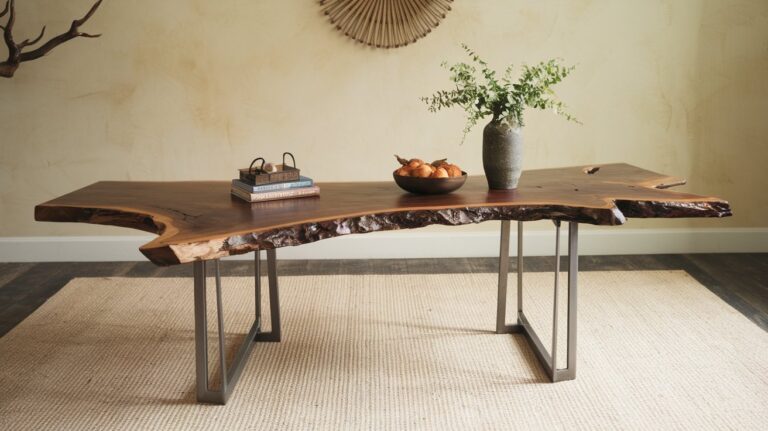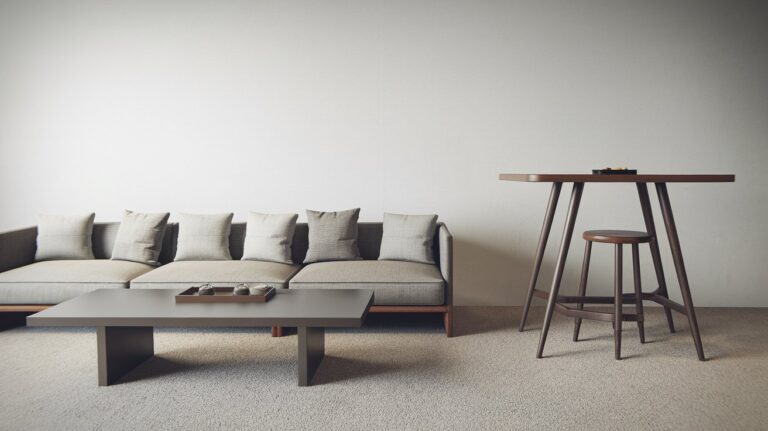Live Edge Wood Slabs: Ultimate Guide to Quality & Prices 2025
Live edge wood slabs have transformed modern woodworking and interior design, offering natural beauty with functional durability. These unique pieces preserve the natural edge of the tree, creating stunning furniture and architectural elements. With rising demand across the United States in 2025, understanding quality, pricing, and selection criteria ensures you make informed decisions for your project.
What Are Live Edge Wood Slabs and Why Choose Them
A live edge slab of wood is a piece of timber cut lengthwise from a tree trunk while preserving the natural, unprocessed outer edge of the bark or cambium layer. This unique characteristic creates organic, flowing lines that showcase the tree’s natural growth pattern. Unlike traditional lumber with straight, machined edges, live edge slabs retain the authentic shape and character marks that make each piece completely unique.
The appeal of live edge wood slabs extends beyond aesthetics to functionality and sustainability. These slabs offer superior strength due to their substantial thickness, typically ranging from 1.5 to 4 inches. They provide excellent durability for high-use applications like dining tables, kitchen islands, and conference tables. Additionally, using live edge slabs supports sustainable forestry practices by utilizing the entire tree trunk rather than waste portions.
Natural Beauty and Unique Character
Each live edge wood slab tells a story through its grain patterns, knots, and natural imperfections. The preserved bark edge creates striking contrast against smooth, finished surfaces. Wood species like walnut, maple, and oak display distinct characteristics – walnut offers rich chocolate tones, maple provides light, consistent grain, while oak delivers prominent grain patterns with excellent durability. These natural variations ensure no two pieces are identical, making your furniture truly one-of-a-kind.
Versatile Applications for Modern Spaces
Live edge slabs adapt to various design styles, from rustic farmhouse to contemporary minimalist aesthetics. Popular applications include live edge dining tables, kitchen countertops, bathroom vanities, shelving, and artistic wall installations. The substantial thickness of quality slabs supports heavy-duty use while maintaining structural integrity. Professional designers increasingly specify live edge elements to add organic warmth to commercial and residential spaces throughout the United States.
Live Edge Wood Slabs Prices and Cost Factors in 2025
Live edge wood slabs prices vary significantly based on species, size, quality, and geographic location across the United States. In 2025, expect to pay between $8-15 per board foot for common species like maple and oak, while premium species like walnut and cherry command $20-40 per board foot. Large slabs measuring 8 feet or longer with exceptional figure can reach $50-80 per board foot from specialty suppliers.
Several factors influence live edge wood slabs price list variations. Thickness directly impacts cost – slabs under 2 inches typically cost less per board foot than thicker 3-4 inch pieces. Width also affects pricing, with wide slabs (36+ inches) commanding premium prices due to scarcity. Quality grades consider defects, checking, and overall appearance, with bookmatched pairs or sets increasing value substantially.
Regional Price Variations Across the US
Geographic location significantly impacts live edge wood slabs near me pricing and availability. West Coast markets often pay 15-25% more due to transportation costs and higher demand in metropolitan areas like Seattle and San Francisco. Midwest regions, particularly around hardwood forests, offer more competitive pricing with direct access to local mills. Southern states provide excellent value for species like pecan and cypress, while Northeast markets command premium prices for figured maple and cherry slabs.
Budget Planning for Live Edge Projects
When budgeting for live edge wood slabs for sale, factor in additional costs beyond the raw slab price. Professional kiln drying adds $2-5 per board foot but ensures proper moisture content. Finishing materials, hardware, and professional installation can double the total project cost. Plan for 10-15% waste factor when calculating board footage requirements, especially for complex shapes or matching grain patterns across multiple pieces.
How Thick Should Live Edge Slabs Be for Different Projects
The optimal thickness for live edge wood slabs depends on intended use, span requirements, and aesthetic preferences. Standard thickness ranges from 1.5 to 4 inches, with specific applications demanding particular specifications. Understanding load requirements, visual proportions, and structural integrity helps determine appropriate thickness for successful projects.
How thick should a live edge slab be for dining tables? Most dining applications require 2-3 inch thickness to support typical use while maintaining proper proportions. Conference tables and heavy-duty applications benefit from 3-4 inch slabs for enhanced stability. Decorative applications like floating shelves can utilize 1.5-2 inch thickness, while kitchen islands often specify 2.5-3 inches for durability and visual weight.
Structural Requirements by Application
Different furniture applications demand specific thickness standards for optimal performance. Live edge dining tables spanning 6-8 feet require minimum 2-inch thickness to prevent sagging and ensure longevity. Kitchen countertops benefit from 2.5-3 inch thickness to handle daily use and support heavy appliances. Floating shelves can utilize 1.5-2 inch slabs, while conference tables spanning 10+ feet need 3-4 inch thickness for structural integrity without center support.
Visual Proportions and Design Considerations
Thickness affects visual weight and proportion in furniture design. Thicker live edge slabs create substantial, grounded appearance suitable for rustic or industrial aesthetics. Thinner slabs offer contemporary, refined look appropriate for modern minimalist designs. Consider room scale and existing furniture proportions when selecting thickness – oversized slabs can overwhelm small spaces while thin slabs may appear inadequate in grand rooms.
Why Are Live Edge Slabs So Expensive in 2025
Why are live edge slabs so expensive compared to traditional lumber? Multiple factors contribute to premium pricing, starting with raw material scarcity. Large, high-quality trees suitable for wide slabs are increasingly rare due to logging practices and forest management changes. The time required to properly dry thick slabs – often 6-12 months in kilns – adds significant processing costs that suppliers pass to consumers.
Processing complexity significantly impacts final pricing. Each slab requires individual assessment, custom milling, and specialized handling due to unique dimensions and characteristics. Quality control involves extensive inspection for defects, proper moisture content verification, and grading for appearance characteristics. Transportation costs are substantial due to weight and size, often requiring specialized equipment and freight services throughout the United States.
Scarcity and Sourcing Challenges
The supply chain for quality live edge wood slabs faces increasing pressure from multiple sources. Urban development reduces available forestland, while sustainable harvesting practices limit tree selection. Large diameter trees producing wide slabs require decades of growth, creating natural supply constraints. Specialty species like figured walnut or curly maple are particularly scarce, driving premium pricing for exceptional pieces with unique grain patterns.
Processing and Quality Investment
Professional processing adds substantial value and cost to raw live edge slabs. Proper kiln drying requires controlled environment facilities and extended timeframes to achieve optimal 6-8% moisture content. Surface preparation involves specialized equipment to flatten and smooth surfaces while preserving live edge character. Quality suppliers invest in climate-controlled storage, handling equipment, and skilled craftspeople to maintain slab integrity throughout the supply chain.
Are Live Edge Tables Still in Style in 2025
Are live edge tables still in style in 2025? Absolutely, with evolving design trends embracing natural, sustainable materials more than ever. Contemporary interior design increasingly values authentic, handcrafted elements that provide connection to nature. Live edge furniture satisfies growing consumer demand for unique, environmentally conscious choices that tell stories and create conversation pieces in modern homes.
Design evolution has refined live edge applications, moving beyond purely rustic aesthetics to sophisticated contemporary interpretations. Modern live edge tables incorporate sleek metal bases, glass elements, and refined finishing techniques that complement minimalist and transitional design styles. This versatility ensures continued relevance across diverse interior design trends and demographic preferences throughout the United States market.
Current Design Trends and Applications
Contemporary designers increasingly specify live edge wood slabs in mixed-material applications, combining organic wood with industrial metal, glass, or stone elements. Popular trends include epoxy river tables that incorporate colored resin in natural cracks, creating stunning visual effects. Office environments embrace live edge conference tables to humanize corporate spaces, while residential applications expand beyond dining tables to include bathroom vanities, kitchen islands, and artistic installations.
Future Design Projections
Market research indicates sustained demand for live edge furniture through 2025 and beyond, driven by millennial and Gen Z preferences for authentic, sustainable products. Emerging trends include smaller accent pieces, mixed-species combinations, and integration with smart home technology. The biophilic design movement continues gaining momentum, with live edge elements providing natural connection in increasingly digital environments.
Finding Quality Live Edge Wood Slabs Near You
Locating live edge wood slabs near me requires understanding regional suppliers, quality indicators, and purchasing strategies. The United States offers diverse sourcing options, from local sawmills to specialty lumber yards and online marketplaces. Successful slab selection involves evaluating multiple suppliers, comparing quality grades, and understanding regional species availability for optimal project outcomes.
Quality assessment begins with moisture content verification – properly dried slabs should measure 6-8% moisture using professional meters. Surface inspection reveals checking, knots, and grain characteristics that affect both appearance and structural integrity. Reputable suppliers provide detailed specifications including species, dimensions, moisture content, and grade classifications to support informed purchasing decisions.
Regional Supplier Networks
The live edge wood slabs market includes diverse supplier categories serving different customer segments. Local sawmills offer direct pricing and species selection but may lack inventory depth. Specialty lumber yards provide curated selections with professional services but command premium pricing. Online marketplaces expand geographic reach but require careful verification of quality claims and shipping considerations for heavy, fragile items.
Quality Evaluation and Selection Criteria
Professional slab evaluation encompasses multiple quality factors beyond visual appearance. Moisture content verification ensures proper drying to prevent future movement or cracking. End checking assessment reveals extent of natural splitting that may require repair or affect usable length. Grain orientation and figure evaluation determines optimal cutting and finishing strategies. Live edge wood slab grading systems help standardize quality comparisons across different suppliers and price points.
Related video about live edge wood slabs
This video complements the article information with a practical visual demonstration.
FAQ – Common Questions
What is a live edge slab of wood?
A live edge slab of wood is a piece of timber cut lengthwise from a tree trunk while preserving the natural, unprocessed outer edge. This creates organic, flowing lines that showcase the tree’s natural growth pattern, making each piece completely unique with authentic character marks and grain patterns.
Why are live edge slabs so expensive?
Live edge slabs are expensive due to raw material scarcity, extensive processing requirements, and specialized handling. Large, high-quality trees are increasingly rare, proper kiln drying takes 6-12 months, and each slab requires individual assessment and custom milling. Transportation costs are also significant due to weight and size.
How thick should a live edge slab be?
Live edge slab thickness depends on intended use. Dining tables typically require 2-3 inches for proper support and proportions. Kitchen countertops benefit from 2.5-3 inches for durability. Decorative shelves can use 1.5-2 inches, while conference tables spanning 10+ feet need 3-4 inches for structural integrity.
Are live edge tables still in style in 2025?
Yes, live edge tables remain highly stylish in 2025. Contemporary design trends increasingly value natural, sustainable materials that provide connection to nature. Modern applications incorporate sleek metal bases and refined finishing techniques, making live edge furniture suitable for minimalist and transitional design styles.
Where can I find live edge wood slabs near me?
Live edge wood slabs are available through local sawmills, specialty lumber yards, and online marketplaces throughout the United States. Local sawmills offer direct pricing, specialty yards provide curated selections with professional services, while online platforms expand geographic reach and inventory options.
What do live edge wood slabs typically cost?
Live edge wood slab prices range from $8-15 per board foot for common species like maple and oak, while premium species like walnut command $20-40 per board foot. Large slabs with exceptional figure can reach $50-80 per board foot, with additional costs for kiln drying and finishing services.
| Key Aspect | Important Details | Benefit |
|---|---|---|
| Pricing Range | $8-80 per board foot depending on species | Budget planning flexibility |
| Optimal Thickness | 2-3 inches for most applications | Structural integrity and visual proportion |
| Style Relevance | Trending in 2025 contemporary design | Timeless investment value |
| Sourcing Options | Local mills, specialty yards, online | Diverse selection and competitive pricing |

